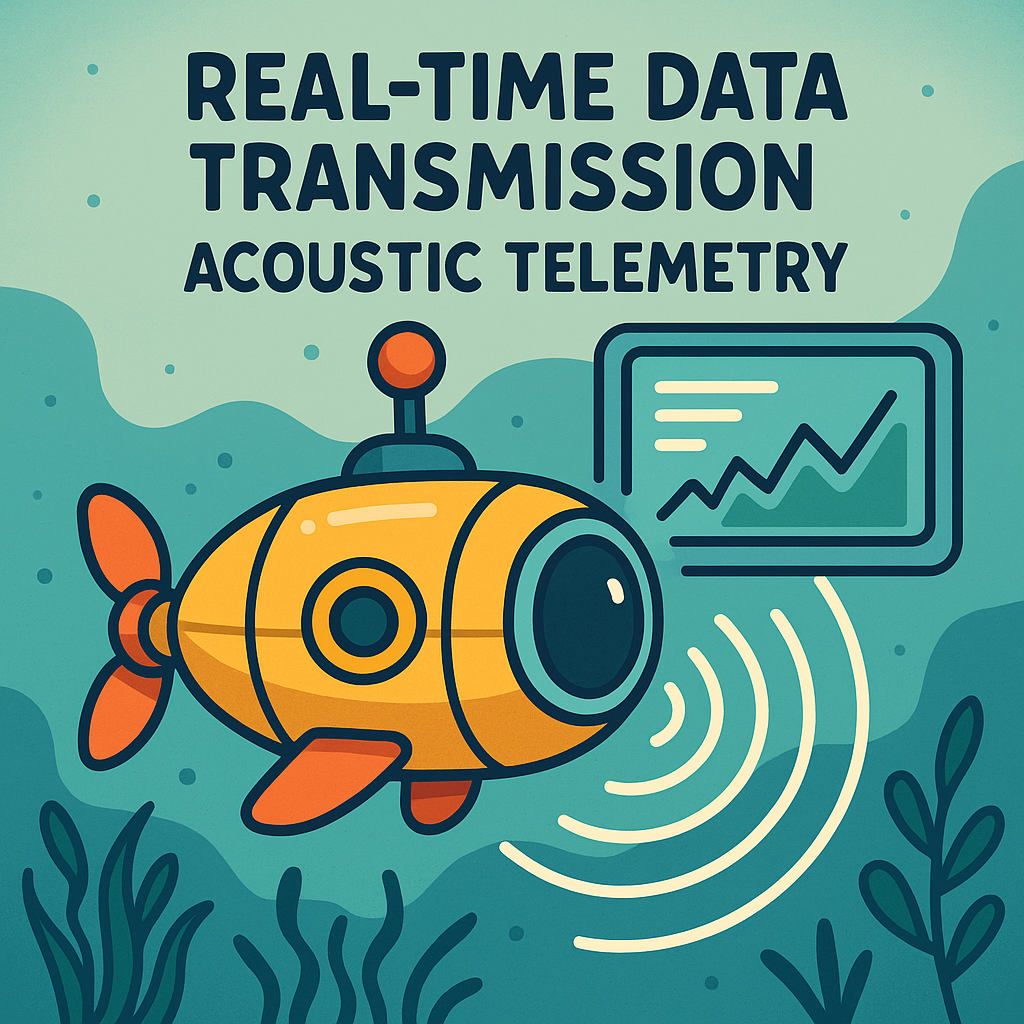Understanding Acoustic Telemetry in Deep-Sea Robotics
In the realm of autonomous deep-sea exploration, the ability to transmit data in real-time is paramount for successful missions. Acoustic telemetry has emerged as a key technology in enabling communication between underwater robots and their surface counterparts. However, optimizing these protocols presents unique challenges due to the harsh underwater environment, which includes high pressure, varying temperatures, and complex signal propagation dynamics.
The Challenges of Underwater Communication
One of the principal challenges of acoustic telemetry is the limited bandwidth available for data transmission. Underwater acoustic channels typically offer a bandwidth of less than 10 kHz, a stark contrast to terrestrial radio frequencies. This limitation necessitates efficient use of the available bandwidth to ensure reliable communication.
Moreover, the underwater environment is rife with noise—both ambient and generated by the robotic systems themselves. This noise can severely degrade the quality of the signals being transmitted. Multipath propagation, where signals reflect off the seafloor or other obstacles, complicates matters further, leading to phase shifts and increased bit error rates.
Hardware Considerations for Acoustic Transceivers
The design of acoustic transceivers is crucial in overcoming these challenges. Key components include piezoelectric transducers, which convert electrical signals into acoustic waves and vice versa. Selecting the right material for these transducers is essential; common choices include lead zirconate titanate (PZT) and newer composite materials that can offer improved sensitivity and bandwidth.
Another critical aspect is the power management of these systems. Underwater robots often operate in remote locations for extended periods, so optimizing power consumption is vital. Utilizing low-power components and implementing duty cycling in the transceiver operation can significantly extend operational life without sacrificing performance.
Firmware and Algorithm Optimization
On the firmware side, the choice of modulation schemes can greatly affect the effectiveness of data transmission. Traditional schemes like Frequency Shift Keying (FSK) may be less efficient than newer methods such as Chirp Spread Spectrum (CSS), which offers improved resistance to interference and multipath effects. Implementing adaptive modulation techniques that can dynamically adjust based on real-time channel conditions can also enhance throughput.
Data compression algorithms play a crucial role as well. By reducing the amount of data that needs to be transmitted, these algorithms allow for more efficient use of the limited bandwidth. However, the choice of compression method must balance between the computational load on the robot’s processor and the resulting data size. Techniques such as Huffman coding or even more sophisticated approaches like wavelet transforms can be applied, depending on the specific requirements of the mission.
Real-World Design Trade-offs
One of the most significant design trade-offs in optimizing acoustic telemetry protocols is between reliability and throughput. Enhancing error correction methods, for example, can improve reliability but often at the cost of increased latency and reduced data rates. Engineers must carefully assess mission requirements to strike the right balance. For instance, a mission focused on real-time monitoring may prioritize lower latency over sheer data volume, while a survey mission may allow for more latency in exchange for higher data fidelity.
Additionally, environmental factors must be considered when deploying these systems. Factors such as water salinity, temperature, and depth can influence the acoustic properties of the medium, necessitating the use of robust calibration methods to ensure consistent performance across varying conditions. This is where machine learning algorithms can come into play, using historical data to predict and adjust for these environmental factors in real-time.
Future Directions in Acoustic Telemetry
As we look towards the future of deep-sea exploration, the integration of advanced technologies such as artificial intelligence and machine learning will likely play a pivotal role in refining acoustic telemetry protocols. These technologies can help in developing smarter algorithms that learn and adapt to changing conditions, ultimately improving the robustness and efficiency of underwater communication systems.
Moreover, the ongoing research into novel materials and transducer designs promises to push the limits of what is possible in underwater acoustics. By leveraging advancements in nanotechnology and smart materials, we could see a new generation of transceivers that are not only more efficient but also capable of operating at greater depths and in more challenging conditions.



